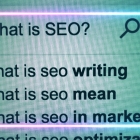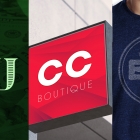Spam: Tasty Breakfast Meat or Bermuda Triangle?
At first glance, it may seem that there's no possible connection between a delicious processed meat product and the endless proliferation of junk email we all receive. And yet, if you think about it, there really are a few similarities between the two. For instance...
- SPAM comes attractively packaged in a pretty blue and yellow can. In fact, its rounded rectangular can, primary colors and branded font have become iconic.
The other spam can also be attractively packaged...looking like regular emails that alert you to relevant industry research that's just been released, or announcing a prize you've just been selected for. (Of course, it can also look like a loud, obnoxious ad, but those are almost always blocked by today's software.)
- The name "SPAM" was coined specifically for this product.* According to one source, the name was the result of a naming contest. (The winner received $100.)
Spam is a newly-coined word, too** and oftentimes the subject lines in spam emails contain new words. (How many ways can "Antibacterial Hand Sanitizers" be misspelled to escape the spam filters?)
- Enjoying SPAM in moderation makes it a fine treat. According to the website (spam.com of course), there are dozens of ways to use SPAM in recipes, and it can easily add some extra oomph to your favorite meal. Yet, many health care professionals would eschew an entire diet of SPAM and for that reason, would probably recommend that consumers exercise some personal restraint to limit their consumption to some degree.
Likewise, occasional email spam is acceptable. There are always those few things that somehow escape the spam filters on our mail systems, and we tolerate it. Indeed, there are even occasionally useful items that find their way to us. And since email spam is pushed out to us (we don't have a choice about receiving it), we've created filters that limit how much of it reaches us.
- While SPAM is delicious, it does have cholesterol. (A 2-oz portion of SPAM Classic has 40 mg.) High cholesterol has been linked to high blood pressure and heart disease.
Similarly, too much email spam clogs up our email systems and can seriously impact the health of our businesses. According to spamlaws.com, there are 14.5 billion spam emails sent every day around the world, equating to almost half of all emails sent.
Clogged business arteries affect our commercial health in the same way...sources quoted at spamlaw.com claim that spam costs businesses $20.5 billion each year, with an average loss of $1,934 per employee. And, at its current rate of proliferation, those numbers could continue to rise exponentially.
How can we protect our businesses against this corporate cholesterol? Spam filters and spam blocks of all sorts have become a growing need. Hardware and software companies around the world continue to engineer tools that can keep out unwanted email. They create complex rules and algorithms that look for specific markers to identify spam.
Of course, spam filtering isn't a perfect science. Spam senders continue working on ways to get around the filters, which means the filters get smarter and more restrictive in response. What this means for us all is that we receive less spam (the good news), but it can also mean that there are sometimes false positives (the less-good news) where legitimate emails are flagged as spam and blocked from recipients.
Fortunately for us, technology companies are developing stronger and more capable filters that can more accurately sort fact (real emails) from fiction (spam emails) so that we can all be more protected and productive.
In the meantime, check your spam filter regularly to be sure you don't miss any important emails, and pay attention to your incoming email to make sure your filter is filtering out most of the spam.
Speaking of spam, anyone in the mood for a SPAM wonton?
We've once again reached the end of another year, and another annual installment of ideas to help you make the most of your marketing and technology investment.
What can you look forward to in 2010? Here are just a few of the topics we'll address...
- Managing your resources: how to apportion both the human and the financial.
- Promoting your business: tips about what, when, where, and how to do it.
- Selling your products and services: we'll look at some of the challenges specific to, and inherent to, small businesses.
- RFPS: how to make the most of those opportunities and what you might not realize you're saying.
Have a safe and happy holiday season, and we'll look forward to seeing you again next year!
 An agency-eye view of Marketing, Advertising, Branding, Design & Media.
An agency-eye view of Marketing, Advertising, Branding, Design & Media.




